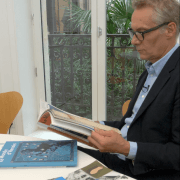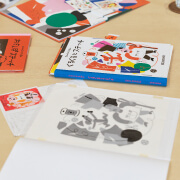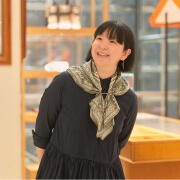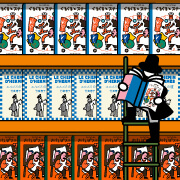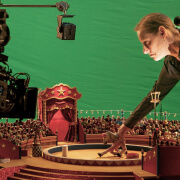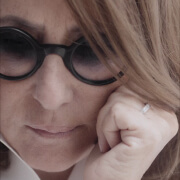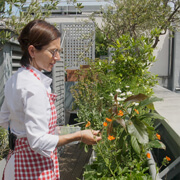Watch the video
STORY
Editing the Heart of Hermès
Olivier Wicker
Director of editorial content at Hermès / Editor-in-chief of Le Monde d’Hermès magazine
Our theme for November is “bouquinistes”. No visit to Paris is complete without a visit to these second-hand booksellers who have plied their trade out of dark green open-air bookshops along the Seine since the 16th century. Like the bouquinistes, we at Hermès place cultural value on literature. Under the editorship of Olivier Wicker, the biannual publication Le Monde d’Hermès freely covers anything and everything to do with Hermès, from ideas and events from long before the maison existed to topics related to Hermès’s present and future.
Onward, to the world of Hermès!
――Books as objets
Le Monde d’Hermès was first published in 1973. Today, it has a circulation of 600,000 in 11 languages. This may sound like a huge operation, but the thought that goes into every issue is exactly the same as that which goes into every handcrafted Hermès objet. Each year, Hermès has an annual theme, and each year, we put together a new small team of art directors, photographers, and writers to make sure that we represent the theme in the best possible way. Believe it or not, the first issue was written in German. A French version was published two years later to the delight of Jean-Louis Dumas, Hermès’s fifth chairman.


――The Silk Road
We have produced two issues a year for the past eight years, and I have a particular fondness for two of them. First is the autumn-winter 2022 issue, the theme of which—“Light-hearted!”—inspired us to experiment with free-form spreads. Second is the spring-summer 2020 issue, which explores acts of innovation. We followed the history of the Silk Road as a prime example of innovation, because it was the first time that Asia and Europe were connected for the purposes of commercial exchange. We wanted to show how innovative that moment was for the world.
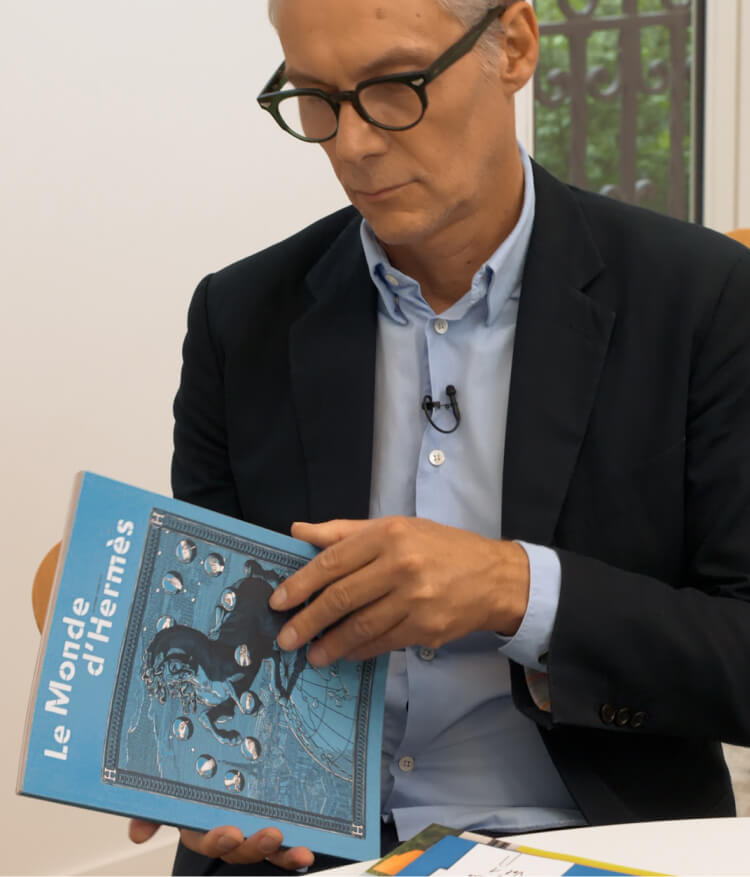

――A wonderland
This year we are bringing you two issues (spring-summer and autumn-winter) on the theme of the Faubourg. I remember how often I myself used to get lost in the Hermès store on Rue du Faubourg Saint-Honoré. It reminds me of Alice’s Adventures in Wonderland, when Alice jumps into a hole and comes out in a different world. I wanted to express the idea that the entrance to Wonderland—that is, the Faubourg—is filled with a wide range of objects and paintings, as well as a diversity of people who work there, weaving their way around each other and these items in a sort of choreography or ballet that takes place every morning. To showcase this concept, I asked a French author by the name of François-Henri Désérable to spend a night in the Emile Hermès collection, located inside the building. The text he gave us after that night is a first-person short story told from the perspective of someone who travels with Hermès objets. The protagonist speaks with Napoleon and with Victor Hugo, goes back to ancient Egypt, and then finally, wakes up.
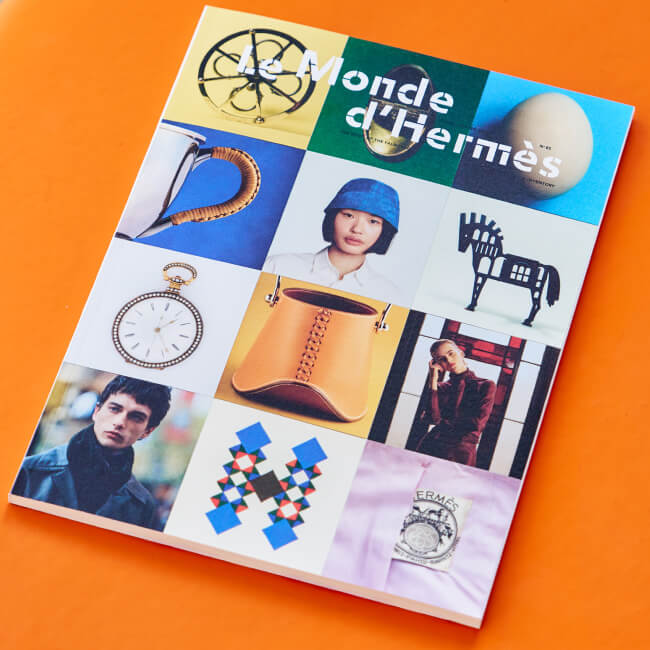

――The Japanese connection
How are we connected to Japanese culture? One thing that immediately comes to mind is paper—the raw material from which a magazine is made. The Japanese are masters of paper making, able to produce truly incredible paper. When it comes to literature, I am like many other French readers in that I really appreciate Haruki Murakami’s work. I’ve also discovered another Japanese writer, Yoko Ogawa, in the last few years. Her books have been translated all over the world, and her short stories are very precise and daring. So, I commissioned her to write a story for this year’s autumn-winter issue, asking her to reflect on the significance of the spirit of the Faubourg from her perspective as a Japanese writer.
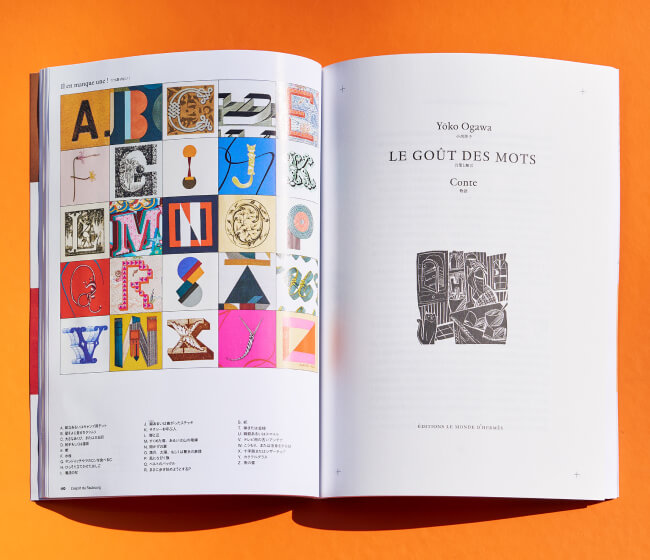
――What it means to be lost
Whenever I visit Japan, I get totally lost. What I mean by that is, I love to get lost in Tokyo because the world of Tokyo is one of novels and writers. Ginza Maison Hermès fits in perfectly, not least because its structure, an ultra-modernist design by Renzo Piano, is unique in the world. It’s a building that has no parallel, commercial or otherwise, anywhere on Earth. It is majestic but blends into the city, and its architectural beauty comes out especially at night, when it turns into a miraculous nocturne.
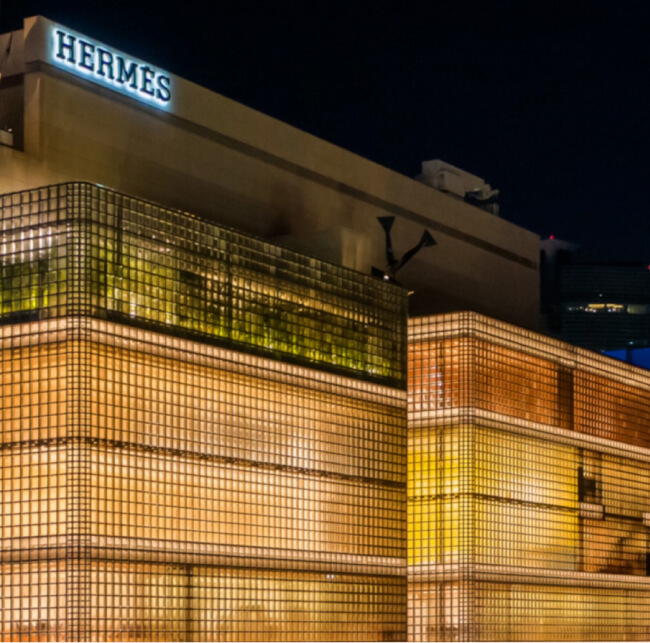
――Inspiring feelings
When you pass in front of an Hermès window display, you might find yourself smiling or laughing like a child as you linger on the details. Le Monde d’Hermès should open hearts and minds in the same way. Japanese culture has a very subtle way of expressing things. It is sometimes metaphorical or poetic, and nothing is too literal. Our magazine is much the same; I like to leave a bit of mystery about what Hermès is all about. We use beautiful paper and hire talented writers to produce a high-quality magazine, but we do so without bringing overt attention to ourselves. With every issue, I want to bring the reader something uplifting, something that inspires them to dream, something pleasing to the eye.
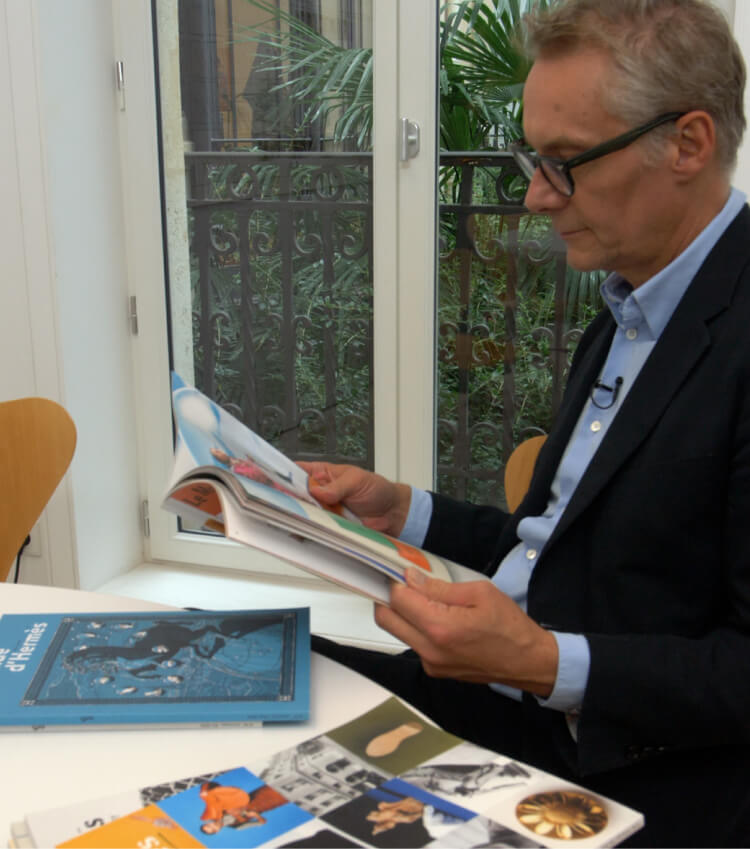

Olivier Wicker
Olivier Wicker is the director of editorial content at Hermès and editor-in-chief of Le Monde d’Hermès. In his career as a journalist, he served as editor-in-chief of the daily newspaper Libération until 2011 and editorial director of Obsession, a supplement of Le Nouvel Obs magazine, until 2013. For the past eight years, he has been editor-in-chief and art director of Le Monde d’Hermès, a biannual magazine first published in 1973.
Photo: Dimitris Lazarou


